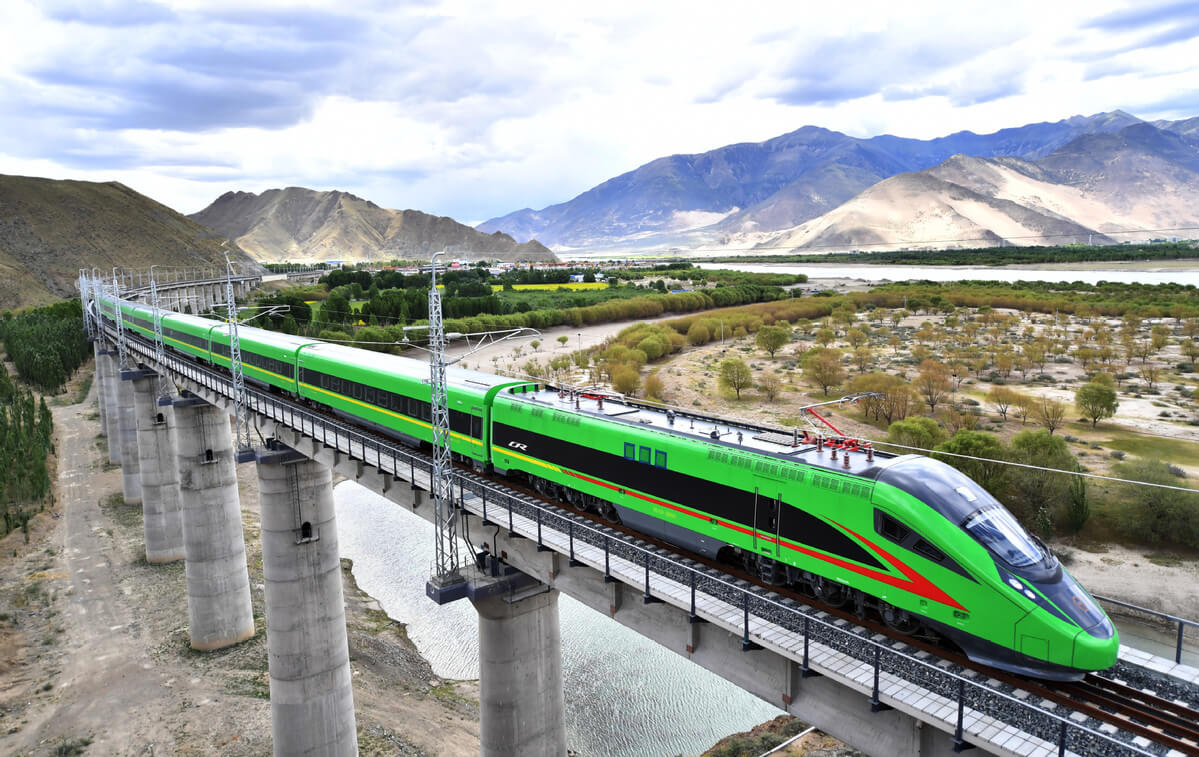China is planning to set up thousands of kilometres of railway lines through the Tibet Autonomous Region (TAR) over the next two years in a bid to further integrate the region into mainland China.
Infrastructure Plans
The Tibet Development and Reform Commission’s newly released report outlined plans for its 14th Five-Year Plan (2021-25) period and beyond, which elaborated on the Chinese government’s plan to lay down 4,000 km of lines by 2025, and 5,000 km by 2035, which will connect all 55 counties and districts.
A Decade of Change | Ep. 26: Tibet Autonomous Region
— Zhang Heqing张和清 (@zhang_heqing) August 27, 2022
In 10 years, the length of highways in Tibet has passed 1,000 kilometers. On August 15, 2014, the Lhasa-Xigaze railway began operations. The primary power grid now covers all counties (districts) across Tibet. pic.twitter.com/PDNhWORPk1
The railway upgrade will link Lhasa, the provincial capital, to neighbouring provinces, including Qinghai, Yunnan, and Sichuan, as well as major land ports.
The proposed railway line will begin in Shigatse in Tibet, and head northwest along the Nepal border. It will pass north through Aksai Chin and end in Hotan in Xinjiang. The route will also pass around Pangong Lake on the Chinese side of the Line of Actual Control (LAC).
W/ heavy spending on the construction of railway & road facilities, #Tibet has seen rapid development & constant improvements to the lives of the locals. Since 2012, more than 50.4 bln U.S. dollars has been spent as fixed-asset investment in Tibet’s transport sector. pic.twitter.com/8jrVnjtQfo
— Ambassador Hou Yanqi (@China2ASEAN) July 4, 2022
The route from Shigatse to Pakhuktso will be functional by 2025, while the line to Hotan will be finished by 2035.
Tibetan Assimilation
The report states that the plan aims to promote socioeconomic development and safeguard national security.
According to the Tibet Rights Collective, the government will also build 59 new airports and 300 helipads by 2035, whose ‘dual-use’ nature will help Beijing station its forces throughout the volatile state.
With a designed speed of 160 km/h (100 mph), Lhasa-Nyingchi railway marks the first electrified railroad operating in the plateau. Take the train to see Xizang/Tibet in summer! pic.twitter.com/w32e3s2ZmS
— Lijian Zhao 赵立坚 (@zlj517) June 27, 2022
It is believed that the expanded and improved infrastructure will help the Xi Jinping administration to facilitate the assimilation of the Tibetan population with the dominant Han culture, as it will enable large-scale urbanisation and migration, driving the intermarriage trend.
Yang Hao, a professor of rail transportation management at Beijing Jiaotong University, told China Daily that the plan will hugely contribute to the region’s “economic development, transportation upgrade and ethnic unity.”
The latest development follows the release of a UN report claiming that one million Tibetan children have been separated from their families and forced to assimilate into China’s dominant Han culture by being enrolled into government-run residential schools.

